29th November, Saturday
Dear all, you’ll be happy to know that for now there will be no History or Geography lessons as we make our way slowly down the Murrumbidgee River to Hay and then will follow the Murray River to Melbourne. We left Wagga Wagga on another very warm day and headed slowly towards Darlington Point. The scenery along the way is not very exciting as the Riverina seems to be mostly wheat farming with the odd vineyard or two. We found a lovely camping spot on the Murrumbidgee River. There is only one other caravan here and it’s one of those free camping spots. We are not stopping because it’s free but because there are not a lot of people around and all you can hear are the sounds of the birds. It’s such a tranquil place and if it wasn’t for the flies it would be perfect, but Hey! This is Oz and no campsite would be a campsite without our friendly flies. When we got here the spot we picked was obviously inhabited by trailer trash before us as the site was littered with beer cans, meat bones, other rubbish and dirty nappies. We cleaned the site up and it amazes me how some people live, it’s disgusting. Anyways, the Ralph reckons that there are no fish in the river, DAMN! Chicken again tonight. We decided that we will stay for 2 nights as it really is tranquil here. No facilities here of any sort so we have to be totally self sufficient. We will run the generator tomorrow, just to charge everything up. Water is all good as Ralph filled the van tanks before we left and we have heaps of bottled drinking water. It’s started to thunder and rain here and it has become so humid, we are getting a good breeze coming through the van though so hopefully it will cool things down. We have a room with a view as you can see the river from the throne. We can leave the door open because there is no-one here to see us.
- An abandoned old brewery along the way
- Our camping spot
- Our camping spot
- Our camping spot
- Our camping spot
- No fish – chicken tonight
- How’s the serenity
- Room with a view
30th November, Sunday
It was such a hot and sticky night last night and I battled to get a good nights sleep. Ralph said that he slept the sleep of the righteous, SIGH. At about 4am some Yahoos decided that they would do an upstream trip of the river in their power boat. I heard them coming from miles away as it’s quite here (most times) in the bush. They were Yahooing had their lights on full beam along the river and having a jolly old time. This morning I expected them to come walking out of the bush dressed in their red checked flannelette shirts and playing the banjo. Other than that it has been a quite day, Ralph did some fishing and I did some knitting. The other caravan has left and we are now on our lonesome ownsome. We had about 10 minutes of rain this afternoon and it’s really hot and steamy and the flies love it and I can even hear some cattle complaining at the mo. We head off for Hay in the morning, air con here we come, haha.
- Dusk, from across the river
Hay (wikipedia) is a town in the western Riverina region of south western New South Wales, Australia. It is the administrative centre of Hay Shire local government area and the centre of a prosperous and productive agricultural district on the wide Hay Plains.
Located on the main route approximately midway between the large cities of Sydney and Adelaide at the junction of the Sturt, Cobb and Mid-Western Highways, Hay is an important regional and national transport node. The town itself is built beside the Murrumbidgee River, part of the Murray-Darling river system; Australia’s largest. The main business district of Hay is situated on the north bank of the river.
History
Aboriginal communities in the western Riverina were traditionally concentrated in the more habitable river corridors and amongst the reedbeds of the region. The district surrounding Hay was occupied by at least three separate Aboriginal groups at the time of European settler expansion onto their lands. The area around the present township appears to have been a site of interaction between the Nari-Nari people of the Lower Murrumbidgee and the Wiradjuri who inhabited a vast region in the central-western inland of New South Wales.
In late 1829 Charles Sturt and his men passed along the Murrumbidgee River on horses and drays. They launched their whale-boat near the Murrumbidgee-Lachlan junction and continued the journey by boat to the Murray River and eventually to the sea at Lake Alexandrina (before returning by the same route). During the late-1830s stock was regularly overlanded to South Australia via the Lower Murrumbidgee. At the same time stockholders were edging westward along and the Lachlan, Murrumbidgee, Billabong and Murray systems. By 1839 all of the river frontages in the vicinity of present-day Hay were occupied by squatters. By the mid-1850s pastoral runs in the western Riverina were well-established and prosperous. The nearby Victorian gold-rushes provided an expanding market for stock. The prime fattening country of the Riverina became a sort of holding centre, from where the Victorian market could be supplied as required. One of the popular routes established in the mid-1850s crossed the Murrumbidgee River at Lang’s Crossing-place.
The locality where Hay township developed was originally known as Lang’s Crossing place (named after three brothers named Lang who were leaseholders of runs on the southern side of the river). It was the crossing on the Murrumbidgee River of a well-travelled stock-route (known as “the Great North Road”) leading to the markets of Victoria. In 1856-7 Captain Francis Cadell, pioneer of steam-navigation on the Murray River, placed a manager at Lang’s Crossing-place with the task of establishing a store (initially in a tent). In December 1857 Thomas Simpson re-located from Deniliquin to establish a blacksmith shop and residence at Lang’s Crossing-place. Six months later the Canadian shipwright Henry Leonard arrived; he commenced building a hotel and dwelling-house near Simpson’s buildings and launched a punt on the river. In August 1858 steamers owned by rival owners, Francis Cadell and William Randell, successfully travelled up the Murrumbidgee as far as Lang’s Crossing-place (with Cadell’s steamer Albury continuing up-river to Gundagai).
Henry Jeffries, the leaseholder of “Illilawa” station (which included Lang’s Crossing-place at its western extremity), was vehemently opposed to Henry Leonard’s operations; threats against his punt caused Leonard to stand guard with a loaded gun. An attempt by Jeffries to pull down Leonard’s hotel as it was being constructed caused an outcry from those advocating a settlement at the location. In consequence the NSW Government sent a surveyor to map out a new township. Henry Leonard completed his inn and opened it on 30 October 1858. The Murrumbidgee Punt Hotel was described as a “large size” weatherboard building with a shingled roof “and a fine verandah along the front”. By mid-1859 the Department of Lands had proclaimed reservations on either side of the river at Lang’s Crossing-place and Henry Shiell was appointed Police Magistrate. By October 1859 the township had been named “Hay” after John Hay (later Sir John), a wealthy squatter from the Upper Murray, member of the NSW Legislative Assembly and former Secretary of Lands and Works. Later the same month successful land-sales were held at Hay.Hay’s first decades: 1859 to 1880
Lang’s Crossing Place Post Office opened on 16 April 1859 and was renamed Hay in 1861. In early 1860 a brick court-house and lock-up was built at Hay (at the site of the present post office).The census taken in April 1861 revealed that there were 172 people living at Hay township, consisting of 115 males (of whom 25 were aged 15 years or under) and 57 females (of whom 23 were aged 15 years or under). Of the 90 males aged 16 years or more, only 38% were married or widowed; of the 34 females in this category, 76% were married or widowed. The census also enumerated the buildings at the new township: 4 brick structures; 17 of “weatherboard, slab or inferior”; and, 14 tents.
In April 1861 two new hotel licenses were granted at Hay: the Caledonian Hotel (Thomas E. Blewett and George Dorward) and the Argyle Hotel (Thomas Simpson). The two hotels were located side-by-side in Lachlan Street. During 1862 the Argyle closed its doors, and was offered for sale. In September 1865 George Maiden briefly re-opened it as the Royal Mail Hotel. In February 1866, Christopher Ledwidge, landlord of the Caledonian Hotel since 1864, purchased the Royal Mail and incorporated the two into one hotel. Regrettably, the Caledonian Hotel was badly damaged by fire in 2006, and demolished in 2007.
According to the 1871 census of the Colony of New South Wales there were 664 people living at Hay township: 388 males and 276 females. The proportion of those in the Hay community aged less than 16 years had increased from 28% in 1861 to 38% in 1871.
In November 1871 a petition was prepared by the residents of Hay requesting that the township be granted municipal status. Elections for aldermen were held in August 1872. At the first municipal meeting the local businessman, Frank Johns, was elected mayor.
The first bridge over the Murrumbidgee River at Hay was built in 1872 at a cost of £20,000. The structure included a turntable which enabled the middle-section to be swung open to allow the passage of steamers. The opening of the Hay Bridge was delayed while the approaches were formed. It was finally opened on 31 August 1874 by the Colonial Secretary of New South Wales, Henry Parkes. The old bridge was eventually replaced by a new one, opened in June 1973. The old Hay Bridge was subsequently demolished. The turntable, last used in 1946, was placed in the river-bend just north of where the bridge had been.
As it developed Hay became an essential hub of the surrounding district. Pastoral runs surrounding the township were the main employers of labour; with its stores and hotels, hospital, post-office, banks, court-house and police-station, Hay became an important focus for rural workers and resident squatters alike. Carriers, contractors, wool-buyers and dealers in stock established themselves at Hay and the township became a busy port for the steamers plying the inland rivers. Stores for the township and district stations were unloaded at the wharves at Hay, and the steamers and barges loaded with wool-bales for the return trip (usually to Echuca, which by 1864 had been connected by rail to Melbourne).
During 1879-80 the local building firm, Witcombe Brothers, constructed a new gaol at Hay, to replace the old Lock-up in Lachlan Street (at the site of the current Post Office). The new Hay Gaol was opened in December 1880.Consolidation: 1881 to 1914.
During 1881-2 the railway line was extended from Narrandera to Hay and a new railway station constructed at Hay. The new line, connecting Hay directly to Sydney, was opened in July 1882. The extension of the NSW railway to Hay signalled a decline in the importance of the transportation of wool by river-steamer and a shift in the local economic focus from Melbourne to Sydney. The railway to Sydney operated with a differential price structure, ensuring that rail became a desirable mode of transporting wool for many of the Riverina stations.In 1883 the extensive Anglican diocese of Goulburn was divided, with the western half designated as the major portion of the newly created Diocese of Riverina. Hay was chosen as the episcopal seat of the new diocese and Bishop Sydney Linton was consecrated on 1 May 1884 at St Paul’s Cathedral, London. Linton and his family travelled to Sydney and then on to Hay, where the bishop was enthroned on 18 March 1885 in the old St Paul’s church. The new St. Paul’s – pro-cathedral of the new diocese – was completed by the end of 1885. In 1889 a residence was completed for Bishop Linton at South Hay; the design and materials used in constructing the corrugated-iron clad ‘Bishop’s Lodge’ was an attempt to cope with Hay’s climatic extremes. Hay remained the seat of the Anglican Diocese of Riverina until 1953 when it was transferred to Narrandera, New South Wales. The writer Joseph Furphy lived at Hay in the 1870s while working as a carrier in charge of a team of bullocks. Furphy later used the area surrounding Hay as the setting for his novel Such is Life (published in 1903).
The Great War and afterwards
During the First World War 641 men enlisted for service from Hay and the surrounding district, one of the highest per capita enlistment rates in Australia. Of the men who enlisted one-in-six died during the war, with devastating effect on the close-knit communities of the Hay district.
In 1919 a proposal was adopted to build a High School at Hay as a memorial to those who died in the Great War. The Hay War Memorial High School was opened on Anzac Day, 1923, with Mr. L. E. Penman as the first headmaster.
Internees and POWs
Hay Gaol is today a museum with displays detailing its varied history as a prison, POW camp and girls institution.
During World War II Hay was the location of internment and prisoner of war camps, due in no small measure to its isolated location. Three high-security camps were constructed there in 1940. The first arrivals were over two thousand refugees from Nazi Germany and Austria, many of them Jewish, aged between 16 and 45. They had been interned in Britain when fears of invasion were at their peak, and were then transported to Australia aboard the HMT Dunera. They arrived at Hay on 7 September 1940 in four trains from Sydney and were interned in Camps 7 and 8 (located near the Hay showground) under the guard of the 16th Garrison Battalion of the Australian Army.
Later known as the ‘Dunera Boys’, the internment at Hay of this assemblage of refugees from Nazi oppression in Europe was an important milestone in Australia’s cultural history. 800 of those interned at Hay eventually chose to remain in Australia. The influence of this group of men on subsequent cultural, scientific and business developments in Australia is difficult to over-state; many became an integral and celebrated part of the nation’s cultural and intellectual life.[10] The ‘Dunera Boys’ are still fondly remembered in Hay. Every year the town holds a ‘Dunera Day’ in which many surviving internees return to the site of their former imprisonment.
In November 1940 the other compound at Hay, Camp 6 (near the Hay Hospital), was occupied by Italian civilian internees. Camps 7 and 8 were vacated in May 1941 when the Dunera internees left Hay; some were sent to Orange (NSW), others to Tatura in Victoria, and others to join the Pioneer Corps of the Australian Army. Upon their departure Italian prisoners-of-war were placed in Camps 7 and 8. In December 1941 Japanese internees (some from Broome and islands north of Australia) were conveyed to Hay and placed in Camp 6. In April 1942 the River Farm began operating on the eastern edge of the town, enabling market-gardening and other farm activities to be carried out by the Italian internees and POWs. In August 1944, in the wake of the Cowra POW break-out on 5 August 1944, 600 Japanese POWs were transferred to Hay and placed in the two high-security compounds 7 and 8. On 1 March 1946 the last of the Japanese POWs left Hay. During 1946 the Italians who remained there were progressively released or transferred to other camps, and the Hay camps were dismantled, and building materials and fittings sold off, by June the following year.
1st December, Monday (Hay)
I know that I said no History or Geography lessons, but I lied (hahahaha). This place is worthy of a History and Geography lesson and was also a place where 2nd World War POWs were interned.
We left Darlington Point at 9 am and already we could feel the heat coming in. It’s another 35 degree day today and we have the humidity as well. Again, the scenery is mostly flat and farmland (wheat and cattle). We had to go slow in one place as a farmer had put all his cattle on the long paddock so there was cattle all over the road crossing from one place to the next. The caravan park here is very nice and on the river, however there is a fence dividing us but we have a gate to go through and we believe that the fishing is good, we shall wait and see. The manager of the caravan park brought us some fresh eggs, home grown garlic and home grown chillies and wouldn’t take anything for it, so I gave him a couple of bottles of my homemade sauce which he took, it’s so awesome to swap home produce for home produce. I went to the local IGA and just bought a few things and one of the young girls at the till offered to carry my groceries to the car, I thought that was sweet and then thought “I wonder if I look like a decreptic old bag (hahaha). Once again the country people are helpful and friendly and can’t do enough to help. The managers of the caravan park went home to get a yabbie net for Ralph to borrow so that he could catch his own bait, how awesome is that? Air con, air con, air con, I can’t say it enough. It’s lovely camping in the bush and the place was idyllic but this old chook is getting used to the little luxuries of the caravan parks. I know that we used to do it in the camper trailer, go anywhere, camp anywhere, deal with the heat and the flies………. Those days are over and we enjoyed them at the time but now I am enjoying my little bit of luxury.
2nd December, Tuesday (Hay)
It was another hot night but I have my air con now so I was cool, cool, cool. Ralphie went fishing this morning and caught a nice sized Yellow Belly but he put it back because he wasn’t sure of the legal size limit. He also caught a carp which you are not allowed to put back but the bugger jumped off the bank and back into the river. He also caught a Silver Bream but that one was a smidge undersized. Tomorrow he will go back because he found out what the size limit is. Hot again today so we did some of the sightseeing around town and had breakfast at the local bakery, nice healthy pie and milk shake for the Ralph and beans (farties) and scrambled eggs and a milkshake for me. We came back to the caravan park. We hosed poor Hugo down because he was so hot and he felt so much better after that, you could tell.
- Hay post office
- Hay shire council building
- The fountain that was given to Hay because they had no water
- The fountain that was given to Hay because they had no water
- The fountain that was given to Hay because they had no water
- Hay
- Hay fire station
- Old Hay railway station
- Hay – Station masters house
- Hay – Station masters house
- across the road from the station and this place is inhabited
- POW museum
- POW museum
- Hay railway station
- Hay court house, the building is circa1892
- Some arty farty sculptures
- Some arty farty sculptures
- Some arty farty sculptures
- Some arty farty sculptures
3rd December, Wednesday (Hay)
It’s raining today and it’s so humid and warm. Ralph went fishing this morning and he caught his Murray cod, a fair size but he had to put his back because it was still under size. He is happy now because his ambition before we set out was to catch a Barramundi and a Murray cod and he has now achieved this ambition and can go home a happy man. His fishing days aren’t over yet because he is still going for the cod, a nice big one for the bbq. We went to visit the Hay Gaol and it is such a sad place. It was established 1878 and was used at different times of course as a gaol, maternity hospital, a locked up hospital for the insane, a compound for prisoners of war (Japanese and Italian) and lastly as a addicts, prositutes, alcoholics and a few committed suicide, it really is such a sad place and it is sad that that was allowed to happen, after that we went to visit the local cemetery (I have to do this in these towns, it’s compulsory). We visited a working shearers shed and were given a demonstration. We’ve never seen it done in real life (only in the movies). These guys average about 3 mins per sheep and when you feel the heat here and see the shed which is not airconditioned you realise just how hard this job is, it’s not for the feint hearted and they earn every single dollar. We are going across the road to the pub for dinner tonight as I don’t feel like cooking and we choof off for Echuca in the morning and it’s a bit of a longer haul for us so we want to pack most things tonight so we can leave early in the morning.
- Murray Cod caught in the Murrumbidgi river
- The sad Hay Gaol
- The sad Hay Gaol
- The sad Hay Gaol
- The sad Hay Gaol
- The sad Hay Gaol
- The sad Hay Gaol
- The sad Hay Gaol
- The sad Hay Gaol
- The sad Hay Gaol
- The sad Hay Gaol
- The sad Hay Gaol
- The sad Hay Gaol
- The sad Hay Gaol
- The sad Hay Gaol
- The sad Hay Gaol
- The sad Hay Gaol
- The sad Hay Gaol
- The sad Hay Gaol
- The sad Hay Gaol
- Old windmill at the gaol
- Sheds at the gaol
- Sheds at the gaol
- The Hay cemetery
- The Hay cemetery
- The Hay cemetery
- The Hay cemetery
- The Hay cemetery
- Christmas country style
- Working shearing shed
- Working shearing shed
- The inmates
- Working shearing shed
- Working shearing shed
- Working shearing shed
- Working shearing shed
- Working shearing shed
- Working shearing shed
- Working shearing shed
- The inmates are being watched
- These working dogs are amazing
- I’m watching you
- This dog is amazing and he’s still in training, he doesn’t take his eye off the sheep even if you talk to him
- Shearing shed
- checking out his stock
- A shearer at work
- A shearer at work
- A shearer at work
- A shearer at work
- A shearer at work
- A shearer at work
- A shearer at work
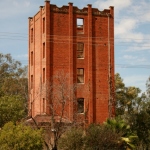




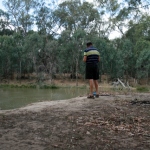

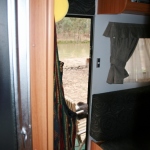

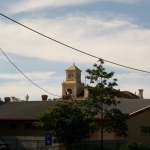



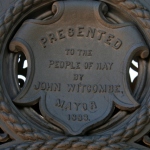



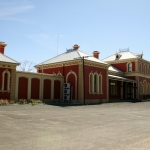

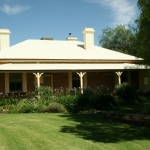




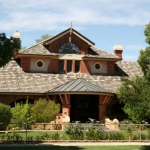




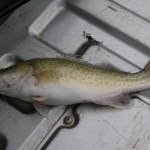







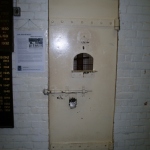









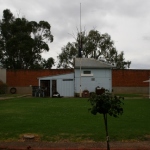
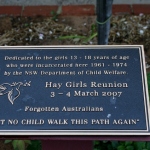












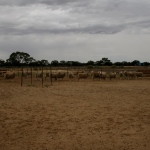











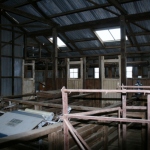
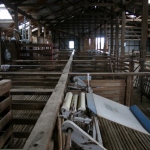
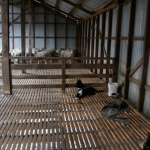



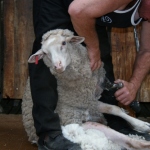




What’s wrong with flies they are a good source of protein especially when they get stuck in your throat and wriggle till you wash them down with wine!
Glad to see old people enjoying themselves
Cheers
HAHA, I’ve had a whole meal of them washed down with a bottle of wine Liz xxxx
I saw the shearing at the Hay shed – it was pretty cool
love
See you next week xxxx
That brewery looks amazing would love to know where it is